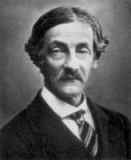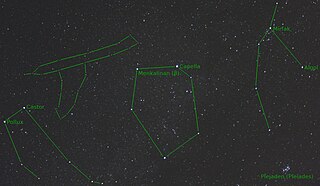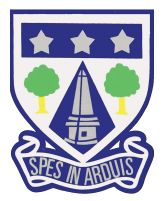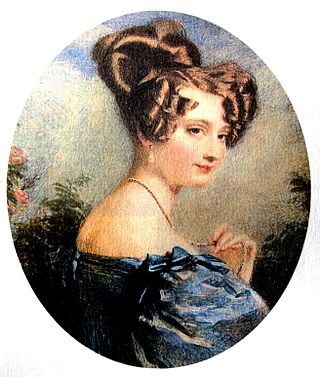
Frederick William Herschel was a German-British astronomer and composer. He frequently collaborated with his younger sister and fellow astronomer Caroline Herschel. Born in the Electorate of Hanover, William Herschel followed his father into the military band of Hanover, before emigrating to Great Britain in 1757 at the age of nineteen.

Sir John Frederick William Herschel, 1st Baronet was an English polymath active as a mathematician, astronomer, chemist, inventor, experimental photographer who invented the blueprint and did botanical work.

The New General Catalogue of Nebulae and Clusters of Stars is an astronomical catalogue of deep-sky objects compiled by John Louis Emil Dreyer in 1888. The NGC contains 7,840 objects, including galaxies, star clusters and emission nebulae. Dreyer published two supplements to the NGC in 1895 and 1908, known as the Index Catalogues, describing a further 5,386 astronomical objects. Thousands of these objects are best known by their NGC or IC numbers, which remain in widespread use.

Caroline Lucretia Herschel was a German-born British astronomer, whose most significant contributions to astronomy were the discoveries of several comets, including the periodic comet 35P/Herschel–Rigollet, which bears her name. She was the younger sister of astronomer William Herschel, with whom she worked throughout her career.

Alexander Stewart Herschel, DCL, FRS was a British astronomer.

The Gold Medal of the Royal Astronomical Society is the highest award given by the Royal Astronomical Society (RAS). The RAS Council have "complete freedom as to the grounds on which it is awarded" and it can be awarded for any reason. Past awards have been given for "outstanding personal researches in the fields of astronomy and geophysics" as well as general contributions to astronomy and geophysics "that may be made through leadership in research programmes, through education and through scientific administration". It has been awarded both for research that has taken a lifetime, and for specific pieces of research.

Telescopium Herschelii, also formerly known as Tubus Hershelli Major, is a former constellation in the northern celestial hemisphere. Maximilian Hell established it in 1789 to honour Sir William Herschel's discovery of the planet Uranus. It fell out of use by the end of the 19th century. Psi2 Aurigae at apparent magnitude 4.8 was the constellation's brightest star.
Saint Laurence's Church is one of three Church of England parish churches in the benefice of Upton-cum-Chalvey, and is the oldest building in the borough of Slough, in Berkshire, England.

The Grove Primary School is a school from pre-primary to Grade 7 in Claremont, Cape Town, Western Cape, South Africa.
Paul Cairn Vellacott served as Headmaster of Harrow School and Master of Peterhouse, Cambridge.

Sir William James Herschel, 2nd Baronet was a British ICS officer in India who used fingerprints for identification on contracts.

The Herschel Baronetcy, of Slough in the County of Buckingham, was a title in the Baronetage of the United Kingdom. It was created on 17 July 1838 for John Herschel, son of the famous astronomer Sir William Herschel, and a well-known astronomer in his own right. The baronetcy became extinct on the death of the third baronet on 15 June 1950.
General The Honourable Sir Alexander Hamilton-Gordon, was a Scottish soldier and Liberal Party politician.
The Catalogue of Nebulae and Clusters of Stars (CN) is an astronomical catalogue of nebulae first published in 1786 by William Herschel, with the assistance of his sister Caroline Herschel. It was later expanded into the General Catalogue of Nebulae and Clusters of Stars (GC) by his son, John Herschel. The CN and GC are the precursors to John Louis Emil Dreyer's New General Catalogue (NGC) used by current astronomers.

Observatory House was the name of an 18th-century observatory established by William and Caroline Herschel in Windsor Street, Slough. After the original building had been demolished, the name was re-applied to a modern office block on the same site which now serves as the headquarters of Slough Borough Council.
Colonel John Herschel was an English military engineer, surveyor and astronomer. He was the son of Sir John Herschel, 1st Baronet, and grandson of William Herschel.
Herschel, Herschell, Herschelle or Hershel is a given name and a surname of German and Jewish origins. Notable people with the name include:

Lady Margaret Brodie Stewart became Margaret Herschel (1810–1884) was a British botanical artist and hostess. While she was in South Africa she and her husband made dozens of botanical paintings of wild flowers which they brought back to Europe for study. Her husband was one of the leading scientists in Victorian Britain.












